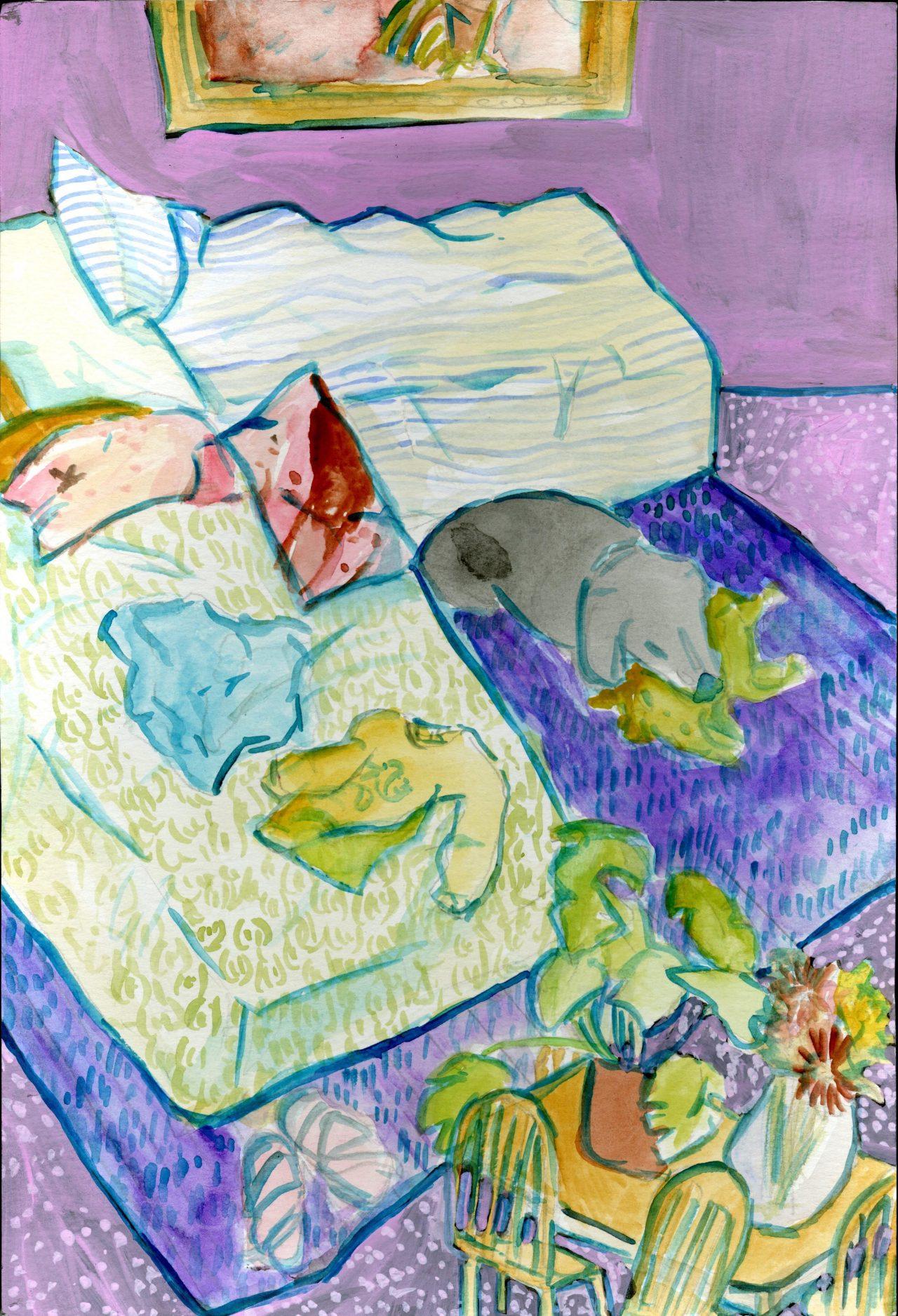Artwork by Elyse Andrews
This article is a part of the Trinitonian’s remote coverage due to Trinity University’s response to the novel coronavirus (COVID-19). Click here to read the rest of our reporting.
After the university announced a sudden switch to remote learning, every course required at least a small amount of reworking to finish out the semester online, but studio art without the studio presents a unique challenge. However, creativity is a given for art students and professors alike. They have made their adjustments, and art classes are continuing as normally as possible.
Nearly every Friday this semester, studio art professor Elizabeth Ward’s Outdoor Studio course went on a field trip. The week of April 3, they planned to go to the San Antonio Missions National Historical Park — but the Missions are closed, and students in Ward’s class are off-campus, following the rules of social distancing. Ward loosened the requirements for her “art and artifacts” assignment.
“I just said, ‘This is just a suggestion,’ you know,” Ward said. “If you can’t be in a place where there are actual historical artifacts, that’s fine. Do whatever you’re inspired to do.”
Senior Elyse Andrews lives far from any historical artifacts. She came up with a suburban solution to the assignment.
“I’ve had a lot of thoughts about what my neighborhood was like before it was developed. There are some little bits and pieces of undeveloped land, and there used to be more,” Andrews said. “I was just having a conversation with my mom about it. She was like, ‘Oh you don’t remember any of that before the middle school was built?’ I was like, ‘No, I don’t really remember.’ So I might try and think about historical spaces … in that way.”
Though her students are far away, Ward still hopes they will be inspired by the outdoors when working on their assignments.
“Part of my philosophy of the class is that it’s so beneficial for students — creatively, psychologically, physically — to be outdoors,” Ward said. “I feel like, particularly at this moment, it can be even more beneficial. So, I’m emphasizing to them that I want them to continue to go outside as much as they can safely.”
Ward also teaches Drawing II, which she said is easier to manage remotely. She has waived materials and size guidelines for the course.
“In a sense, that’s the easiest class to continue with because they don’t really need specialized supplies,” Ward said. “I told them, ‘As long as you have a pencil and paper, you can make a drawing.’”
However, the most difficult transition Ward has to make is in regard to Senior Studio, a capstone course in which senior studio art majors prepare for their final exhibition. This course is the culmination of art students’ work over their four years at Trinity, and the switch to a remote gallery show is less than ideal.
“Since they’ve been working on this all year, many of them were kind of well along with their projects and are going to be able to pretty much realize what they had hoped. But some people are going to have to adapt,” Ward said.
Instead of a physical gallery, the class is converting to a virtual reality (VR) show. Ward’s son, Zak Ziebell, is playing a big part in the switch. A graduate of Brown University and Rhode Island School of Design, Ziebell has significant experience working with VR technology. Before Spring Break, he’d run a workshop with the senior studio, showing them how to create portfolio websites and virtual display rooms for their work.
“And so my mom was like, ‘Oh, why don’t we do something like you showed them in the workshop?’” Ziebell said. “I’m fresh out of college, so I’ll do it cheaply … It’s a fun job, too.”
The job will require Ziebell to recreate Trinity’s Neidorff Art Gallery as exactly as he can in a virtual space. The geometry of the space will be based on the gallery’s floor plan, and Ziebell will fill this in with textures from pictures of the gallery.
“I went to the gallery, like kind of snuck in when Trinity was shut down, and I took photographs of the floor, the wall, the ceiling fixtures [and] the view looking outside. I’m using all of these to make textures,” Ziebell said. “I’m going to use the textures I photographed and stretch them onto that geometry.”
Elyse Andrews’ work — a series of 20-by-20 inch watercolor paintings — will be in the gallery show. She said she is not too worried about using the virtual space.
“I know that one of the issues some [students] are having is those who are doing three-dimensional work, and they’re concerned about photographing the work for the VR show,” Andrews said. “It’s doable for sure. I just know some people are concerned with how it’ll turn out. For me, there aren’t any huge roadblocks.”
Originally scheduled for April 17, the gallery opening will now take place on Thursday, April 30. Those in attendance will not need a headset or any unusual tech to see the exhibition — just their phone or computer and an Internet connection.







